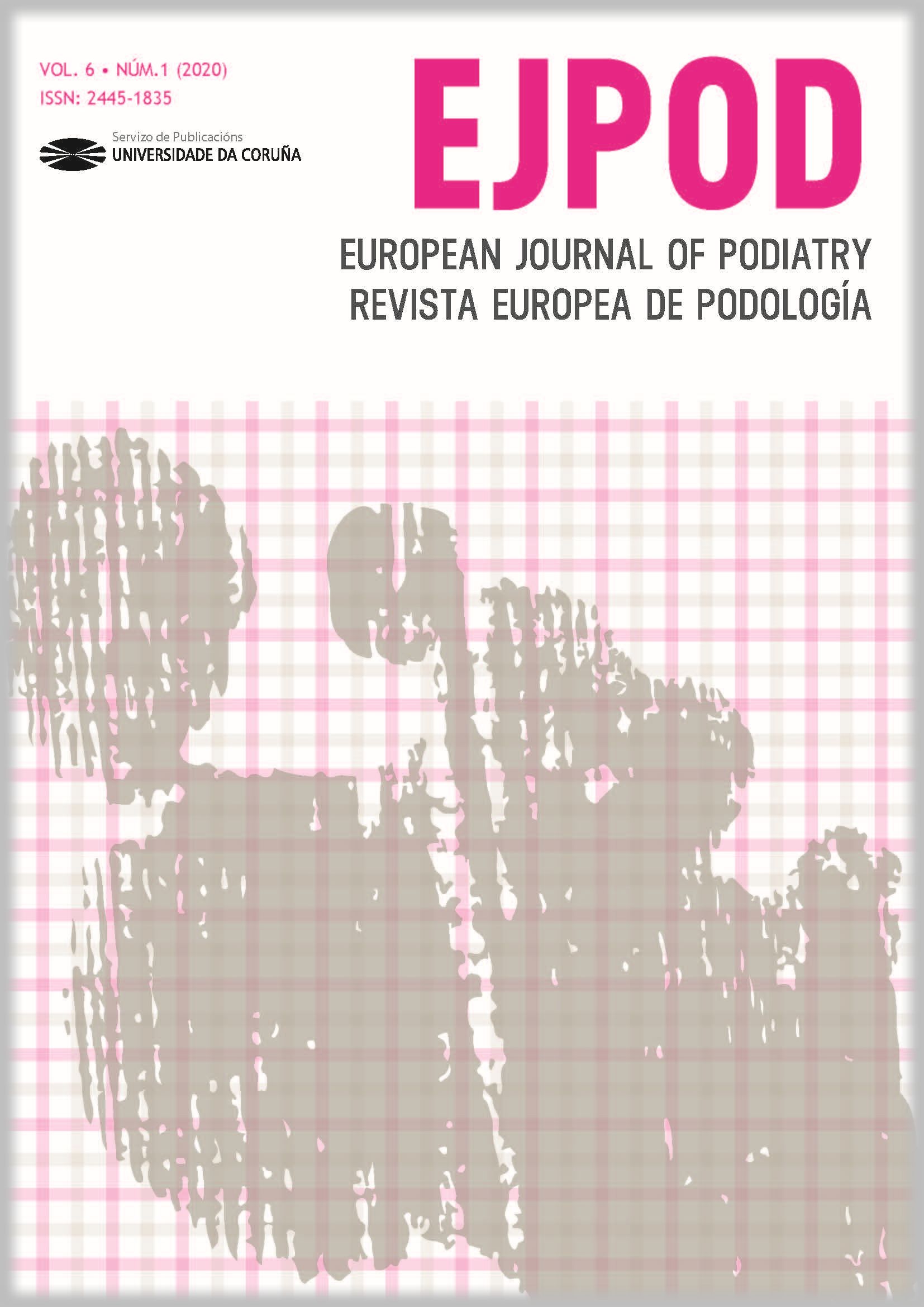Nueva técnica quirúrgica para el tratamiento de la retroniquia: avulsión parcial proximal
Contenido principal del artículo
DOI:
https://doi.org/10.17979/ejpod.2020.6.1.3800Resumen
La retroniquia u onicocriptosis proximal es una patología que se presenta con relativa frecuencia en las consultas de podología. La avulsión ungueal completa ha sido el tratamiento de elección descrito en la literatura para el abordaje de la patología. A pesar de ser efectiva, no está exenta de inconvenientes asociados a la pérdida de la función mecánica que la lámina ungueal tiene encomendada en el primer dedo de los pies. Para evitar o aminorar la aparición de estos inconvenientes, proponemos una alternativa sencilla consistente en la avulsión parcial proximal no incisional de la lámina ungueal dejando intacta la porción distal adherida al lecho hasta que la nueva lámina ungueal termine por desplazarla.
Palabras clave:
Detalles del artículo
Referencias
De Berker DA, Richert B, Duhard E, Piraccini BM, Andre J, Baran R. Retronychia: proximal ingrowing of the nail plate. J Am Acad Dermatol. 2008;58(6):978-83.
Robledo A, Godoy E, Manrique E, Manchado P. Retronychia: an underdiagnosed disease. Dermatol Online J. 2017;15: 23(7).
Ventura F, Correia O, Duarte AF, Barros AM, Haneke E. “Retronychia--clinical and pathophysiological aspects”. J Eur Acad Dermatol Venereol. 2016; 30(1):16-9.
Baumgartner M, Haneke E. Retronychia: diagnosis and treatment. Dermatol Surg. 2010;36(10):1610-4.
Gerard E, Prevezas C, Doutre M-S, Beylot-Barry M, Cogrel O. Risk factors, clinical variants and therapeutic outcome of retronychia: a retrospective study of 18 patients. Eur J Dermatol. 2016;26(4):377-81.
Braswell MA, Daniel CR 3rd, Brodell RT. Beau lines, onychomadesis, and retronychia: A unifying hypothesis. J Am Acad Dermatol. 2015;73(5):849-55.
Fernández J, Reyes-Baraona F, Wortsman X. Ultrasonographic Criteria for Diagnosing Unilateral and Bilateral Retronychia. J Ultrasound Med. 2018 ;37(5):1201-9.
Collins SC, Cordova K, Jellinek NJ. Alternatives to complete nail plate avulsion. J Am Acad Dermatol. 2008;59(4):619-26.
Pandhi D, Verma P. Nail avulsion: indications and methods (surgical nail avulsion). Indian J Dermatol Venereol Leprol. 2012;78(3):299-308.
Mazuecos J, Pérez Bernal A, Camacho FM. Skin bridge on a nail plate caused by distal onychocriptosis. Eur J Dermatol. 2015;25(2):185-6.
Zook EG, Baran R, Haneke E, Dawber RPR. Nail surgery and traumatic abnormalities. In: Baran R, Dawber RPR, de Berker DAR, Haneke E, Tosti A, editors. Baran and Dawber’s diseases of the nails and their management. 3rd ed. Malden, MA: Blackwell Science; 2001. pp. 425-514.
Grieg JD, Anderson JH, Ireland AJ, Anderson JR. The surgical treatment of ingrowing toenails. J Bone Joint Surg Br. 1991;73(1):131-3.



